Carbon fiber is practically synonymous with strength and durability. From Formula 1 race car body panels to high-end bicycle frames and pro tennis rackets, when it’s made with carbon fiber, it’s lightweight and strong. In 3D printing materials, you’ll find carbon fibers infused into a wide range of plastics, including ABS, polycarbonate, and, most commonly, nylon, to boost that base material’s strength.
The common perception may be that these fibers will make your PLA parts stronger, too. Yet, is infusing a relatively weak material like PLA with carbon fibers actually a gimmick to double the price of your PLA and give the illusion of strength, or does it actually serve a unique purpose?
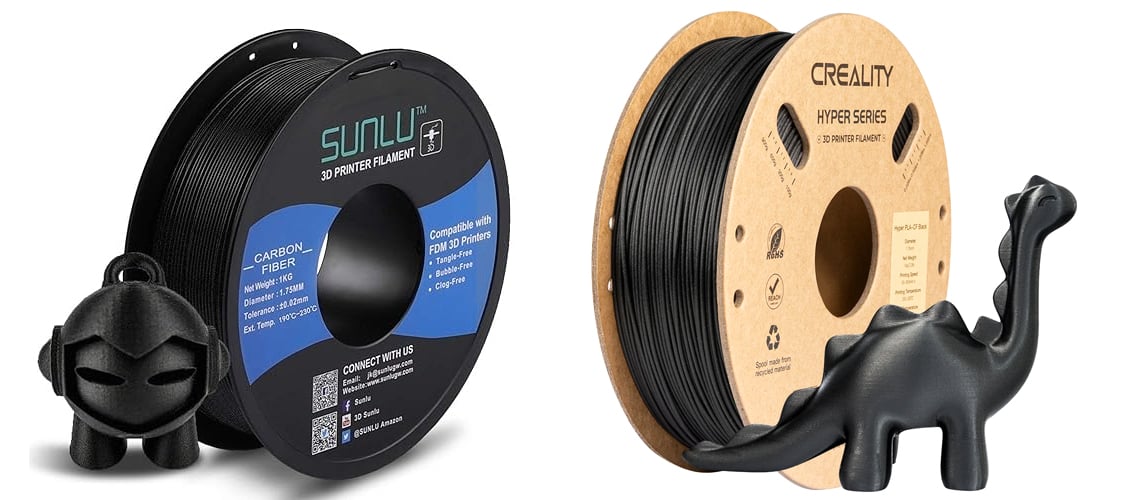
Here, we compare the mechanical properties of carbon-fiber PLA to regular PLA and other carbon-fiber-infused polymers. We also explore if there are any specific benefits of 3D printing with carbon-fiber-infused PLA.
Mechanical Property Comparison of PLAs & Alternatives
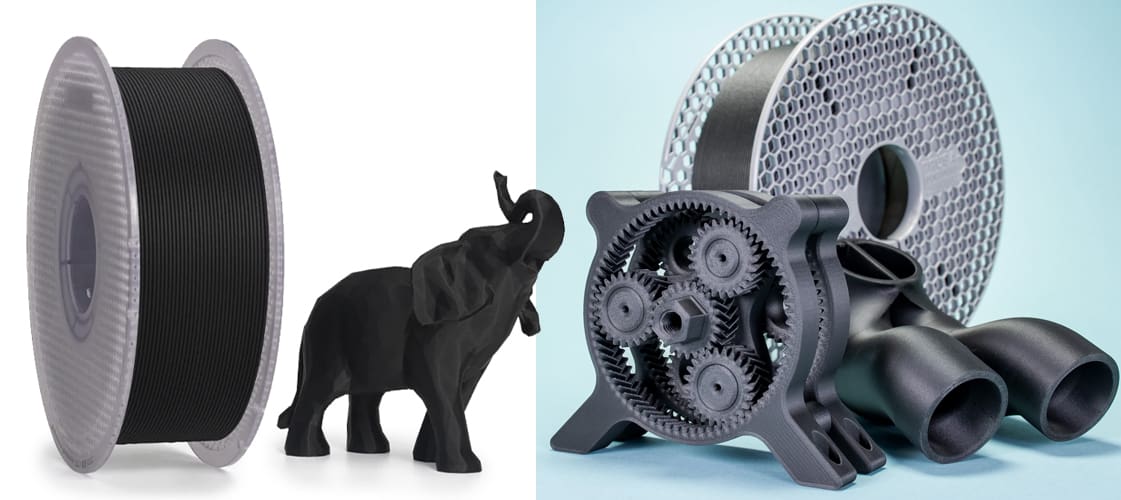
PLA (Polylactic acid) is like bread, in that there are hundreds of different recipes made in different ways to produce different types, but it’s all bread. PLA formulations can be tweaked to produce end-results that have various – yet not drastically different – mechanical properties.
Some grades of PLAs are designed to be heat resistant, others are designed to be more impact resistant, some have additives to be electrically conductive or minimize odor while printing.
With that in mind, we looked at the PLA and the CF-PLA from the same material maker as a comparison. As the chart below shows, the addition of carbon fiber to PLA resulted in a slightly higher tensile strength, or resistance to pulling apart, but only in the XY orientation. Along the layer lines, the tensile strength was lower, possibly indicating that the carbon lessened the layer bonding. The carbon fiber PLA also has lower impact strength, lower elongation at break (or flexibility), and is more stiff than regular PLA.
So, overall, not the right choice if you’re looking for a stronger version of PLA.
If you’re looking for double the tensile impact strength you’d opt for one of the “premium” or “pro” PLA formulations or simply choose a different plastic, such as PETG for tensile strength or ABS for impact strength.
- PLA: PolyMaker PolyTerra PLA
- CF-PLA: PolyMaker PolyTerra PLA-CF
- Premium PLA: BASF Ultrafuse PLA Pro1
- ABS: PolyMaker PolyLite ABS
- PETG: Kimya PETG-S
- Testing standards: ISO 527/ASTM D638, ISO 178/ASTM C790, ISO 1183/ASTM D792
Why 3D Print with Carbon Fiber PLA?
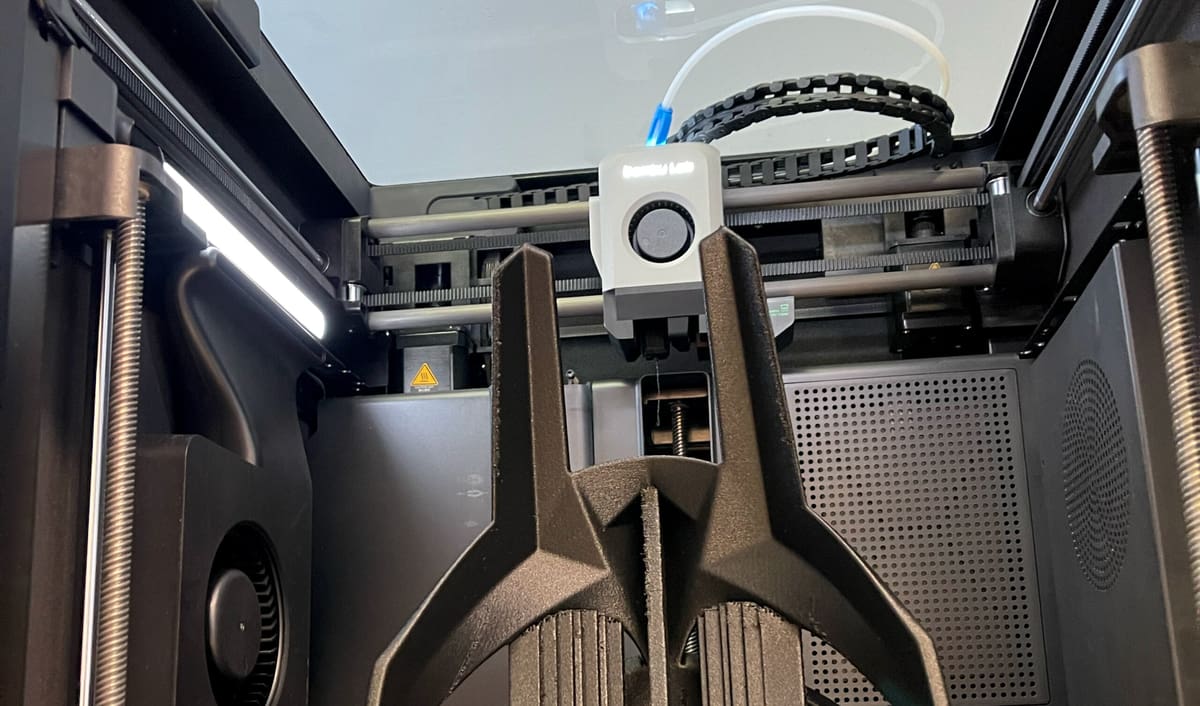
So if there’s little mechanical property benefit from adding carbon fibers to PLA, what’s the point?
We turned to some polymer experts to find out.
Luke Taylor at filament maker PolyMaker told All3DP: “You are right in thinking that in the majority of cases carbon fibers are added to polymers to enhance the strength and stiffness of a material, so starting with a strong base material is an obvious choice as you are boosting the properties of an already strong material.” PolyMaker offers 13 PLAs, including CF-PLA, premium PLA, light-weight PLA, and high-speed PLA.
However, in PolyMaker’s view, carbon fiber is added to PLA mainly for aesthetic reasons, not mechanical.
“The matte black surface finish PLA-CF is a unique finish that has the ability to completely hide layer lines at 0.2 mm layer height because the surface texture absorbs light,” says Taylor.
PolyMaker’s CF-PLA, like many others, uses milled, or ground-up, carbon fiber and not the chopped carbon fiber that you’d find in typical CF-nylon materials. “We choose the milled fibers over the chopped specifically for its surface finish properties.”
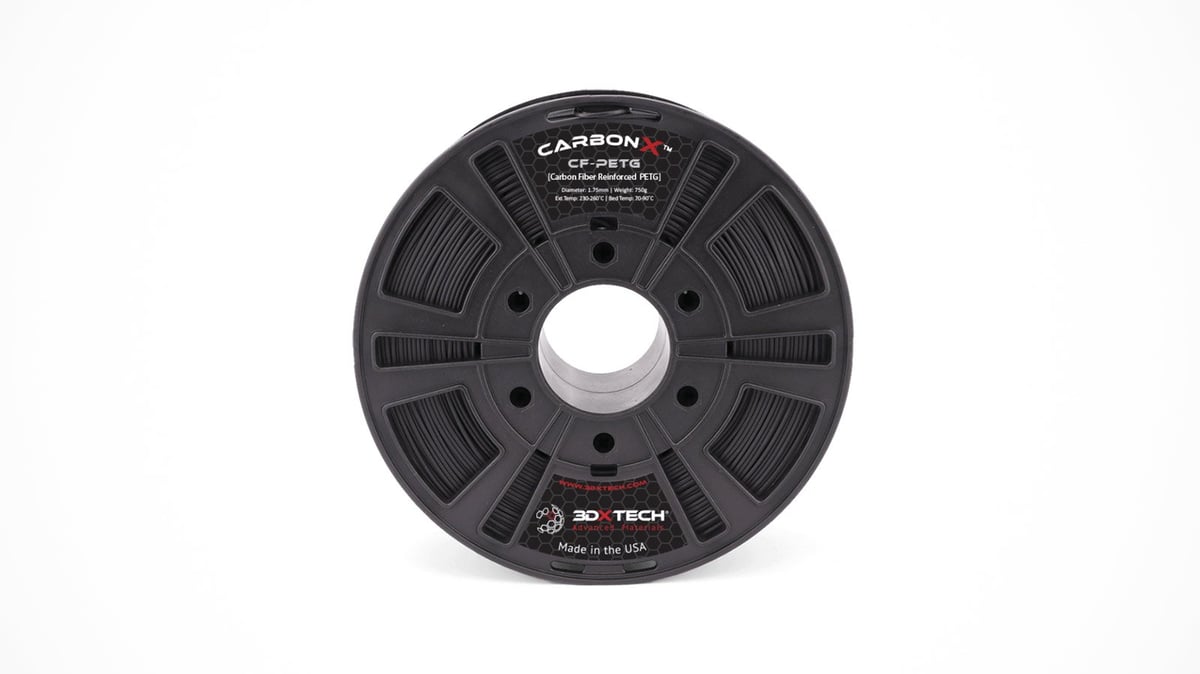
The distinctive matte finish that carbon fibers provide for PLA parts boosts the sophistication of the appearance and texture of the PLA. It also hides defects better, which cuts down on post-processing time, and provides a more “finished” look for prototypes and products right off the print bed. But that’s not the only reason to print with this material.
“The key advantage of CF-PLA is the improved printability,” says Dave Gaylord, the VP at printer and material reseller MatterHackers, which also offers its own materials. “Adding carbon fibers to PLA further reduces issues like warping, which makes it easier to print large or complex parts without the need for a heated bed or enclosure.” Extra heat, by way of an enclosure, heated bed, and hotter nozzle is often required for materials like ABS.
PLA is already the most “printable” polymer due to is low warping and low shrinkage, but carbon fibers help to reduce these effects even more by lowering the coefficient of thermal expansion (CTE), according to Taylor. CTE refers to how much a material expands or contracts when its temperature changes. A low CTE is crucial for ensuring dimensional accuracy and stability of 3D printed parts. PLA has a CTE of around 8.5*, ASA is higher at around 11, and nylon, which is frequently infused with carbon fiber, is even higher at 15.
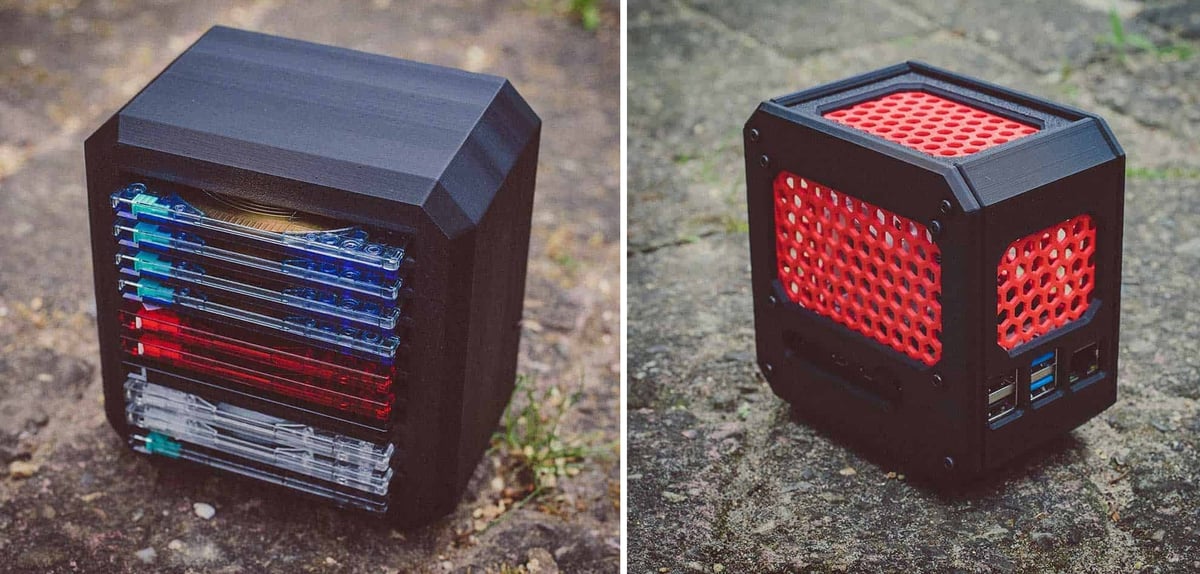
So while the next-strongest polymer from PLA might be ABS, there’s a trade off in ease of printing.
“When comparing PLA to ABS, it’s important to note that ABS can be challenging to print, making carbon-fiber-infused PLA a good balance of strength and ease of printing widely accessible on most desktop 3D printers,” says Gaylord.
If you’re 3D printer does not have additional heating features, your choice of polymers can be limited but keep in mind that any material with carbon fibers (in ground or chopped form) will require a hardened steel nozzle.
Over at filament reseller FormFutura, Remy Marac says they do see a mechanical application for CF-PLA in its lightweight. “Compared to using a solid, stronger material like ABS,” he says, “carbon fiber PLA offers similar strength at a lighter weight, which is a major benefit for projects like drone parts or robotics components.”
Marac does note that carbon fibers can make PLA more brittle, “so parts may not handle impacts as well as standard PLA.” In other words, its good for drone parts as long as you don’t crash your drone.
FormFuture does not sell a CF-PLA opting instead to offer “performance” PLAs, including a tough PLA and one called Volcano PLA, engineered for high-impact. The company’s carbon fiber infused materail are CF-nylon, CF-ASA, CF-PP, CF-PEEK, and CF-PAHT.
(*unit of measure is the maximum value at 10-5 / ºC. Source: Omnexus Special Chem.)
Carbon Fiber PLA vs. Other Carbon Fiber Composites
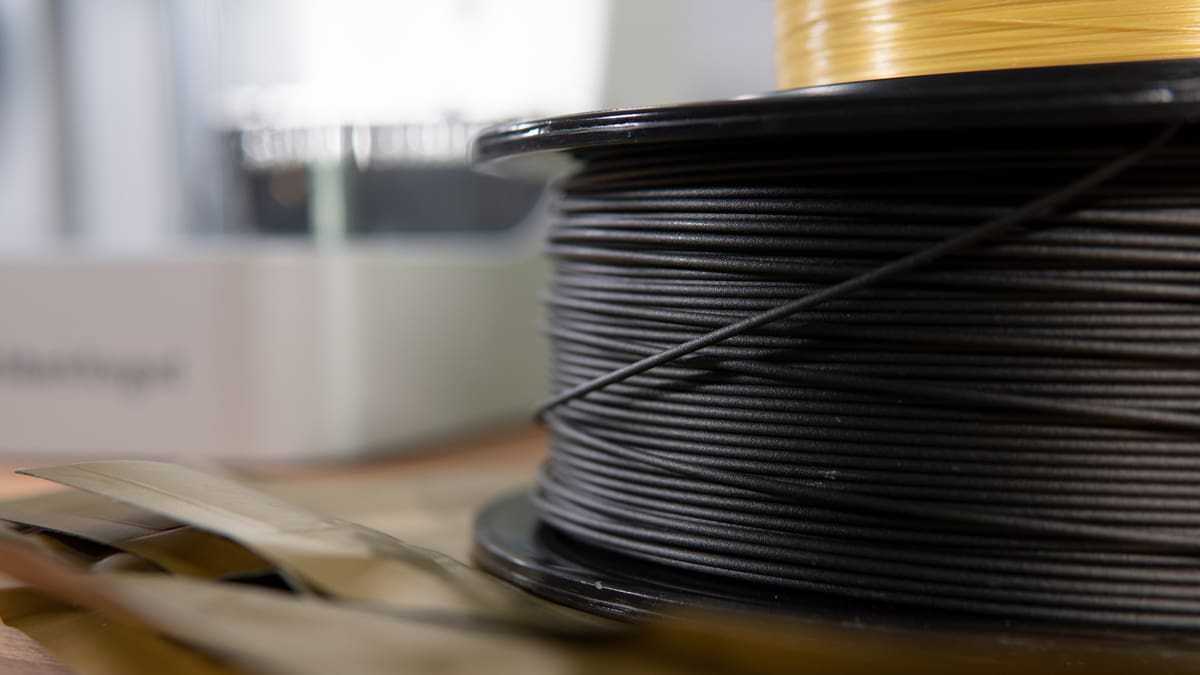
What we’ve uncovered so far is that carbon-fiber does little to boost the strength of PLA and should not be considered a lower-cost version of carbon-fiber nylon.
CF-nylon is in a class by itself when it comes to its strength-to-weight ratio. It’s a go-to material for functional prototypes, high-performance engineering applications, shop tools, factory jigs and fixtures, auto body prototypes, and more. Although nylon is the most popular polymer base material for carbon fiber, it’s not the only one. Depending on your need you can find carbon fiber in PET, TPU, and ABS. In these materials, carbon fiber does work its magic as a strengthener.
- CF-PLA: PolyMaker PolyTerra PLA-CF
- CF-Nylon (CF-PA): PolyMaker PolyMide PA6-CF
- CF-PAHT(nylon high temp): Bambu Lab PAHT-CF
- CF-PET (Polyethylene terephthalate): UltiMaker PET CF
*test method ASTM D3039, ISO 527
- PET: Ultrafuse PET
- CF-PET: UltiMaker CF-PET black
- CF-PET Annealed: UltiMaker CF-PET black. Post-processing heat treatment improves CF-PET’s temperature resistance from 80 °C to 181 °C, increases strength by 30%, and stiffness by 10%.
To take a brief look at how carbon and various fibers can affect a nylon material’s mechanical properties, a good example is the nylon collection from filament maker 3DXTech.
Although 3DXTech’s technical data sheets indicate that tests are carried out according to ISO standards, samples are not tested on both the XY and Z orientation and only one measurement is provided.
- Nylon: 3DXTech AmideX Nylon 6-66 copolymer
- CF-Nylon 6: 3DXTech CarbonX PA6+CF Gen 3
- GF-Nylon: 3DXTech FibreX PA6+GF30 glass fiber
- Kevlar-Nylon: Fillamentum Nylon AF80 Aramid
Lead image model: Modular Toy Robot Arm @tmackay
License: The text of "Is Carbon-Fiber PLA Pointless?" by All3DP Pro is licensed under a Creative Commons Attribution 4.0 International License.

